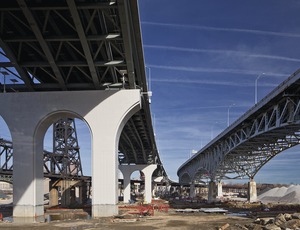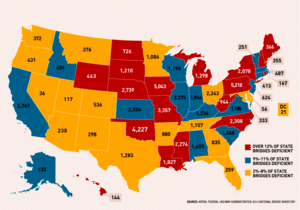
As the Highway Trust Fund balance shrinks and the current surface transportation law's Sept. 30 expiration date looms, the Obama administration has fleshed out the details of its $302-billion plan to save the trust fund from insolvency and boost highway and transit spending over the next four years.
In sending a detailed bill to Congress on April 29, Transportation Secretary Anthony Foxx signaled that the administration wants to be deeply involved as Congress continues to work on a successor to the soon-to-expire Moving Ahead for Progress in the 21st Century Act, or MAP-21.
 |
| FOXX |
Foxx said $150 billion would be enough to close the estimated $63-billion trust-fund gap and boost surface-transportation funding by $90 billion over current levels. The new bill would include more than $190 billion for highways.
The proposal also includes, over four years, $10 billion specifically targeting freight-related projects, greater options for states to toll existing interstates and provisions for streamlined project permitting.
The funding situation is dire. The trust fund's highway account is projected to plunge into the red in August, if not sooner. If Congress misses its second deadline and fails to pass at least a stopgap author- ization by Sept. 30, it could result in the curtailment of any new projects.
"The proposal comes at the most crucial moment for transportation in the past several years," said Foxx. "States are already canceling or delaying projects because of the uncertainty at the federal level."
Pete Rahn, HNTB national transportation practice leader, seconds that assessment. He says, "You've got several [state DOTs] that are withholding awards of projects, pending the clarification of the trust fund's position." Rahn adds that, even if Congress fixes the near-term trust-fund hole, "there are going to be projects that could have been done this year that are going to end up being shoved into next year."
On April 10, Senate Environment and Public Works Committee leaders announced they had agreed on a framework for the highway-policy section of a surface-transportation package; staffers were partway through drafting the legislative language. The senators said they want a long-term bill, maybe up to six years, with highway funding to be set at a modest increase over current levels, accounting for annual inflation. The committee could take up a bill in May.
In the House, Transportation and Infrastructure Committee Chairman Bill Shuster (R-Pa.) on April 29 told the American Council of Engineering Com- panies' annual conference there is wide agreement on the need for a bill longer than the 27-month MAP-21.
But Shuster also is pursuing a near-term stopgap. He said he has been talking to House Republican leaders and the Ways and Means Committee, "trying to figure out a fix for [the trust fund] to at least get us through the end of the year."




Post a comment to this article
Report Abusive Comment